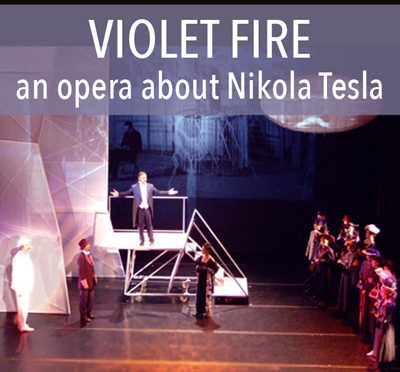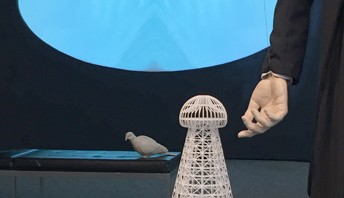Tag: Violet Fire
-
Tesla’s Opera has a cover!
Tesla’s Opera: The Real, Stranger-than-fiction Nikola Tesla is moving toward publication! We now have a cover design for the book I’m editing, which uses the opera inspired by Nikola Tesla’s life as a door to widening our understanding of the visionary inventor. The opera Violet Fire, with a score by composer Jon Gibson…
-
Celebrating Tesla
An opera turns into a book Years ago I became entranced by the visionary inventor, Nikola Tesla, and I began to imagine his extraordinary life as an opera. It seemed to me that only an opera, with its grand scale and intense passions, could do justice to Tesla. Tesla (1856–1943) helped create the bedrock…
-

Tesla, recorded
Violet Fire, the opera about Nikola Tesla that I worked on as librettist with composer Jon Gibson, is finally getting a studio recording! It’s a little late—the world premiere and U.S. premiere happened in Belgrade and New York in 2006—but I’m still excited. Last week, Jon convened a stellar group of musicians at a recording…
-

Living Tesla’s Dream
Today is the 160th anniversary of Nikola Tesla’s birth. Tesla was a seer of electricity, whose vision of a world transformed with an electric grid powered by his alternating current system surely seemed like a wild dream in the late 19th century. Tesla is claimed as a hero in both Serbia and Croatia, having…
-

An elegy for Tesla
Jeanne Jaffe’s ambitious Elegy for Tesla is a high-tech, dreamlike and heartfelt meditation on Nikola Tesla, the legendary scientist and inventor. Jaffe’s multimedia installation fills the Rowan University Art Gallery with videos and sound, 3‑D printed models of his iconic inventions, and animatronic, motion-activated figures of Tesla that move and, in…
